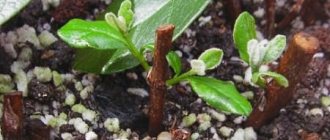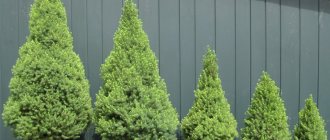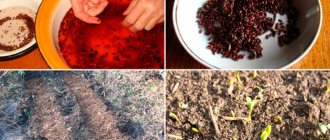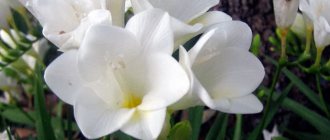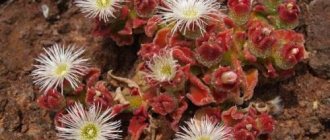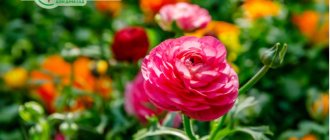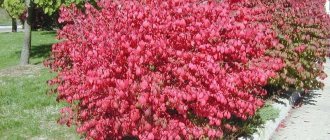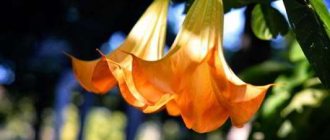Dates, beloved by many, grow on palm trees. Is it possible to grow it at home? Can! This exotic tree looks original and will become a real interior decoration. The date palm will be green and pleasing to the eye all year round. Some species will give luxurious blooms. Let's figure out what type of palm tree to choose for your home, how to grow and care for it.
Types of date palms
The origin of the date palm is uncertain today. It was mentioned by the ancient Phoenicians, Greeks, Jews, and Hindus. She was well known in Egypt and the Middle East. Daughters were named after palm trees in different languages. It was believed that this would bring beauty to the baby, many children and good luck in life.
When this plant appeared on earth is also a mystery. Scientists have proven that people became acquainted with this palm tree and its delicious fruits back in the Neolithic era. It has become the main source of nutrition for millions of people. Today there are 17 species of palm trees native to Africa and Eurasia. For growing at home, we recommend 3 suitable species.
Recurved date palm (phoenix reclinata)
This tree has several trunks with a diameter of 10-17 cm and looks like a bush. It reaches a height of 8 meters. At home it is much lower. The leaves have a spreading shape and look like the feathers of a fairytale bird. They are covered with needle-like growths - thorns. Date tree phoenix reclinata or crooked date palm blooms beautifully in nature. Inflorescences appear in the axils of the leaves. The palm tree is planted in greenhouses and large premises, as it grows well at home, but requires a lot of space.
Robelen date palm (phoenix roebelenii o brien)
Robelena is the smallest option, ideal for a room. The palm reaches a height of 2 meters. May have one or more trunks. Densely located on the rachis are narrow, soft, dark green leaves 12-20 cm long. A date of this type will definitely fall in love with your room if it is warm and relatively humid (at least 50%).
Forest date palm (phoenix sylvestris)
A plant with a wide single trunk in nature reaches 12 meters in height. The leaves have an original bluish-smoky color and a carved shape, consisting of several groups of elongated lobes. About 200 of them can grow on a palm tree. This makes its crown thick and voluminous. The flowers of the forest palm are white and directed upward. Loves dry climates and is unpretentious to abundant daylight.
A little biology
According to various sources, the date genus of the palm family contains from 14 to 17 species. But the real date palm, which produces tasty and healthy fruits, is the palmate date. This plant is not found in the wild, which cannot be said about its relatives - 12 species grow in the tropical and subtropical zones of Pakistan and Africa. Over more than 6,000 years of cultivation, the palmate date has been domesticated. By selecting seedlings obtained from sprouted seeds, and then by breeding, about 5,000 varieties have been created. Biological features:
- tall tree - grows up to 30 m with an average trunk diameter of 80 cm;
- the plant is dioecious, the pollen remains viable for a very long time, and is pollinated by the wind;
- the crown of the palm tree has up to 60 feathery leaves up to 6 m long, they are resistant to dust and wind;
- the harsh conditions of deserts and semi-deserts have created endurance - the tree can tolerate both high and fairly low temperatures, the limit is minus 14 degrees;
- lack of moisture has made the date palm drought-resistant; a very deep root system helps the tree to feed on moisture from the lower horizons of the soil;
- it has adapted to the heat: since in direct sunlight the cells responsible for the growth of all organs do not divide, the palm tree grows at night;
- the tree is accustomed to dry air; excess moisture at the time of flowering and fruiting reduces the yield;
- The palm tree is a long-liver; there are cases of trees bearing fruit even at 200 years of age.
When grown in a room, plants are given their usual conditions. A tree of this size, of course, will not grow in an apartment. It most likely will not bloom, and if this happens, there will be no fruit, since a male pollinator tree is required. But even without fruits, the palm tree is surprisingly decorative. But first you need to sow the seeds. They show best germination in the spring.
Growing from seed
A homemade date palm grown from a seed will turn out no worse than a ready-made sprout bought in a store. The main thing is to properly prepare the seed for planting and plant it in suitable soil. The most favorable time for planting is the end of winter.
Selecting a seed to plant
Regular unprocessed dates bought at the market are suitable for planting. Choose ripe, unspoiled fruits. Eat the fruit and take a good look at the pit. If it is uniformly colored and does not have foulbrood, plaque, stains, or unevenness, set it aside for planting.
Prepare a few seeds for planting, because not all of them can germinate.
Seed preparation
- Rinse the selected seeds under running water.
- Pour warm water into a bowl.
- Place the date pits in a bowl to cover with water.
- Change the water every day, pour clean, warm water.
- After 3-4 days, remove the seeds and lightly file away the hard skin.
- Place them in warm water again for 3-4 days.
- Change the water 1-2 times a day until the sprouts of the future palm tree appear.
Soil selection
Suitable soil can be easily purchased at any flower shop. You can also cook it yourself. To plant a date seed, prepare a mixture of sawdust, turf and sand in equal proportions. To transplant a grown plant you will need: turf, leaf soil, humus, sand. Take all components in proportions accordingly - 1:1:1:5. To ensure that the soil for the date palm is initially fertilized, you can supplement the prepared soil with peat, coal, and rotted manure.
Landing rules
- Take a small pot 12-15 cm in diameter for planting. It’s not worth taking a large one right away; it’s better to replant it later.
- The prepared soil is placed on the drainage. For drainage under the date palm, pour 3 layers: pebbles, expanded clay, coarse sand.
- Make a 2-3 cm depression in the soil and place the sprouted seed there vertically, with the sprout facing upward.
- Sprinkle with soil and water generously.
- Cover the hole with a jar or place the pot on the radiator.
Priming
Soil for planting dates can be purchased at the store, but it will be better if you make it yourself, because it is not at all difficult.
To sow seeds you will need soil with the following composition :
- 1 part steamed peat soil;
- 1 part sand or perlite;
- 1 part raw sawdust.
The main requirement for soil is that it is light, loose, and has good permeability to air and moisture.
The composition of the soil will have to be changed several times depending on the age of the flower.
Growing conditions
In order for the date to grow even, spreading, with natural colors, you need to follow the rules and provide it with comfortable conditions. The first shoots will appear in 1-3 months. When the plant reaches 10 cm in height, pick using the transshipment method.
Lighting
The plant loves the sun, so it will do better in a room with windows facing south or southeast. In summer, take the palm tree to the balcony or loggia. However, keep away from direct sunlight. The balcony must be glazed. Rotate the pot with the plant periodically, otherwise the leaves will grow unevenly and the crown will form crookedly. In the shade, the leaves grow longer as they reach towards the light.
Temperature
The date palm comes from the tropics, subtropics, and equatorial part of the planet, so it loves warmth. She is comfortable in mid-latitudes in summer. In winter, room temperature is sufficient. In the greenhouse in winter you need to maintain a temperature of +10 - +18 degrees. The room should not be hotter than 22 degrees. The room temperature for a date palm may be slightly higher in summer.
Until the sprout appears in the pot, provide an air temperature of +30 degrees, moisten the soil as it dries.
Fruit
Surprisingly, not all date palm fruits can be eaten. However, among edibles, the palmate date is considered especially valuable. He is the most helpful among his "brothers".
Dates are a fairly high-calorie product with a high glycemic index. That is why it is contraindicated for those who have diabetes. Fruits are most often purchased for sale or export in dried form, because this makes them easier to transport and store.
Rules of care
Properly caring for a date palm is no more difficult than caring for an ordinary indoor flower. It needs to be watered, given a shower, fed and replanted as it grows. The date does not tolerate drafts, keep this in mind when placing it.
Watering
Palm trees love water. It does not tolerate dried soil. However, it is also not recommended to fill it, otherwise the roots will begin to rot. It is better to water less often, but abundantly as the soil dries. If the leaves droop down and spots appear on them, it means there is insufficient watering.
Spray dates regularly; they love moisture. Once a week, arrange more serious water treatments. If possible, place the plant's pot in a bathtub, cover the soil with plastic, and rinse the trunk and leaves from the shower.
Never use cold or hot water for watering, washing or spraying.
Top dressing
The date palm needs to be fed all year round. In winter, this should be done no more than once a month, and from March to September inclusive - once a week. Buy a ready-made universal mixture for palm and ornamental leaf plants. Mineral and organic fertilizers are suitable. Dilute them in water and apply to wet soil. Fertilizer should be applied a week after replanting, then the date palm will take root better.
Signs of battery shortage
- The leaves become lighter – there is not enough nitrogen in the soil. First, the leaves acquire a lighter shade, then the growth of the plant stops.
- The leaves are covered with bronze-brown spots - there is little potassium. At first the foliage will become covered with spots, then curl and dry out.
- Yellow edging on the leaves is a lack of magnesium. Feed with magnesium fertilizer, otherwise the plant will die over time.
Trimming
It is not recommended to prune the plant before 5 years of age - it may die. The top of the palm tree should also not be cut off, otherwise the growth point will be disrupted. Do not cut off damaged or yellowed foliage; let it dry out and fall off naturally.
Air humidity
Comfortable indoor air humidity for a date palm is not lower than 50 and not higher than 70%. Before the start of the heating season, move the pot away from the radiator. When the heating is turned on, cover the radiators with a wet cloth. In summer, during dry weather, spray the leaves more often with water at room temperature. This should be done at least once a week.
Description, beneficial properties of jujube
Jujube is a member of the buckthorn family. It is the most important fruit crop growing in dry tropical or hot subtropical deserts, as well as semi-deserts.
The fruits of the date palm are round and fleshy. They are covered with a smooth brownish peel, which acquires a reddish tint as it ripens. The pulp has a sweet taste and juiciness.
The caloric value for 100 g of jujube fruit is 79 kcal. They are rich in ascorbic acid, retinol, B vitamins (adermine, niacin, riboflavin). The fruits of the date palm also contain a large amount of useful minerals: potassium, copper, manganese, iron, calcium.
The rich composition determines the beneficial properties of dates. They have sedative, hypotensive, diuretic properties. Eating jujube fruits helps:
Does the date palm bear fruit at home?
Looking at pictures of palm trees in nature, we admire the huge clusters of fruits ripening on them. There are so many of them that the branches of a 10-20 meter palm tree bend down to the ground. Of course, we want to see at least a small part of this wealth on our pet. But no. Despite the fact that it is a date tree, the palm tree is unlikely to produce dates; it will only provide aesthetic pleasure. Sweet fruits will most likely have to be bought in a store or at the market.
For a palm tree to bear fruit, several conditions must be met:
- Two trees (male and female) grew nearby.
- The plant has reached its full height, which is almost impossible at home.
- The date needs to bloom. If you see even one flower on a date palm in your home, consider yourself lucky.
Date flowers are white or yellow. The opportunity to grow your pet to the desired height appears when planting it in a greenhouse with very high ceilings.
How long does a date grow?
If the seeds were fresh, then you will be able to see the first shoots within a month. Dried seeds will germinate in two to three months.
The date grows for a very long time: feathery leaves appear only after five years. The first two years it resembles grass; the foliage begins to change only in the third year. And in the fourth or fifth year the first dissected shoots appear.
Features of transplantation
The very first pot will soon become small. Under good conditions, the date palm sprout gains height quickly. For the first 5 years you will have to replant annually. Then once every 3 years. A signal that the date is cramped in the pot will be the protrusion of the roots into the drainage holes. Plan this event for the spring, preferably in April.
For transplantation, the transshipment method is used. There should be a lump of earth left on the roots. First, water the date generously, then carefully remove it from the pot. Choose a new pot that is 4 cm larger in diameter with holes in the bottom. Place drainage in the new pot.
The larger the palm tree, the thicker the drainage layer in the pot should be.
When planting, do not bury the stem part and root collar. Water the transplanted date palm generously with water. An adult, large plant cannot be transplanted this way. To renew the soil, remove a layer of 4-5 cm and add fresh soil.
Planting a sprouted seedling
A sprouted seed is not difficult to plant and grow. It is placed vertically in the hole, then gradually covered with earth. Water with a small amount of water and move the pot to a warm place. No special conditions are required for planting; you can choose any container for germination.
Liviston palm - how to plant and care at home
It is recommended to replant the sprouts together with the soil in which they were germinated. For each seedling, you need to prepare a suitable deep pot and soil. Expanded clay and charcoal are poured onto the bottom of the container; the drainage layer should be at least 2 cm.
Note! The next transplant is carried out when the length of the first leaf reaches 15 cm.
Possible problems
For all their exoticism for mid-latitudes, dates are not capricious when kept indoors. If the rules for care and maintenance are followed, the palm tree rarely gets sick. Specimens that have not been properly cared for are subject to attacks by pests or diseases.
Pests
The appearance of pests can befall any healthy plant, although weak ones are more often susceptible to their attacks. Changes in the leaves should alert the owner of the palm tree. They may lighten, curl, dry out, or fall off. Possible pests:
- spider mites;
- mealyworms;
- scale insects;
- nematodes;
- thrips.
If the problem is noticed at the very beginning, simple measures will do. Pick insects from leaves with your hands. Spray the leaves with soapy water, then with clean water. Place the date in a warm room to dry. A tincture of tobacco or garlic will also help against pests.
In case of severe damage to plants, use chemical compounds - insecticides. For example, “Intavir”, “Confidor”, “Fitoverm”, “Aktellik” and others. Usually they are diluted at 2 grams per 1 liter of water, but it is better to read the instructions. When working with chemicals, perform a test. Treat 1-2 leaves first. Wait a day. Look at the plant's reaction.
When treating palm trees with chemicals, be sure to cover the soil with plastic film to prevent them from getting into the ground.
Diseases
Among the diseases that dates are susceptible to are fungal ones: pink rot and gray spot. Diseases are treated with fungicides. These antifungal drugs are applied according to the instructions to the leaves and trunk of the plant no more than once a week.
Why do plant leaves turn yellow?
Completely yellowed leaves indicate a lack of nutrients. There is not enough fertilizer in the date palm pot. Buy them at the store and feed the plant.
If yellowness appears at the tips and along the edges of the leaves, it means that there is insufficient watering or, on the contrary, you are flooding it.
Another reason why the leaves of a palm tree have turned yellow is that there are mites or scale insects. Spray it with tobacco tincture or insecticides. The affected foliage will no longer turn green.
Yellow leaves spoil the appearance, but do not rush to remove them. Wait for them to dry completely and turn brown.
Yellowing of the foliage at the bottom of the crown is normal. It dies off as the trunk grows and new leaves form. If the top or middle turns yellow, the palm tree is sick, we must urgently look for the cause.
What to do if the palm tree stops growing
When grown at home, a young date palm may stop growing. The reason may be that the pot is too big or, conversely, too small. Replace it.
Developmental arrest can occur from hypothermia. A cold snap of up to +17 degrees is enough for this heat-loving beauty to stop growing. In winter, growth stagnation is normal.
Another reason is acidic soil. If you notice a cessation of growth in the summer, add appropriate fertilizer or replant the palm tree in another soil.
Temperature
The plant can withstand summer heat above 30 degrees with high humidity. The most comfortable temperature for him, as befits indoor pets, is 23-25 °C.
In winter, the date palm prefers complete rest, so it can withstand 13-14 °C calmly. If there are no conditions for wintering, then the extreme mark for hibernation will be 18 ° C with the condition of more frequent watering.
The plant is not afraid of drafts; moreover, the room in which it stands must be ventilated frequently.
Watering
Young unabi need watering. For 1 year, each seedling is watered with 20 liters of water 5-7 times per season (for the Moscow region and central Russia). Before the ovaries begin to form, you will need to water the plant 3-4 times during the season.
An adult date palm does not need frequent watering. She produces water herself through the root system. It should be covered with plastic when it rains.
Unabi needs loosening and mulching after watering.
Pruning is done for weakly branching varieties so that the crown is voluminous. Pruning begins in May.
It is possible to grow jujube in your summer cottage if you follow the rules for planting and caring for the exotic fruit crop. This will allow the plant to take root and begin to bear fruit.
Source
